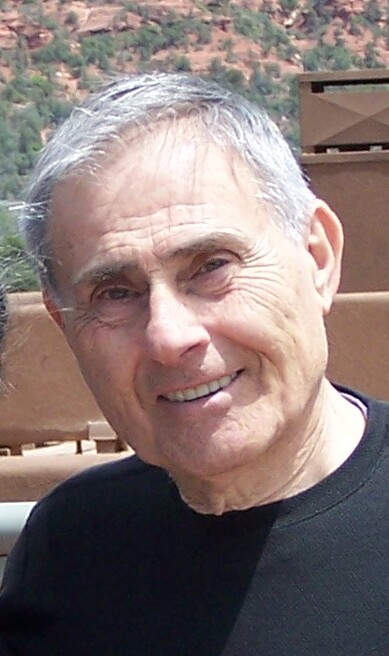
Sidney Jacobson passed away July 23, 2022, at Mission Hospice & Home Care in the San Francisco Bay Area at the age of 92, after suffering a stroke while recovering from a COVID-19 infection. He is owed a debt of gratitude by fans of Harvey Comics from the 1950s through the 1990s, Marvel Comics’ Star line in the 1980s, approximately 300 pop songs of the 1960s, the Johnny Cypher in Dimension Zero animated series of the late 1960s, and 21st century graphic nonfiction such as The 9/11 Report: A Graphic Adaptation. His storytelling imagination encompassed teenage love songs and the childhood innocence of Harvey’s comics fables for kids, as well as the realities of Jewish history and modern bigotry and terrorism.
Jacobson was born and raised in Brooklyn by first generation immigrants Beatrice [Edelman] and Reuben Jacobson. According to an online obituary by his son, Seth: “[H]e had fond memories of the Bensonhurst neighborhood with close relatives nearby, enjoyed many friendships, games of stoopball, and school.… He had a lifetime love for the Brooklyn Dodgers, whom he never forgave for leaving Brooklyn. Upon his relocation to Los Angeles later in life he reconciled his disappointment with them and became a Dodger fan again.... He met our mother, Ruth R. (she made it Rene in practice) Allison, at a ski chalet.... She owned a small boutique with her mother, our grandmother Sylvia Allison... Dad was smitten by Mom's gumption (and figure!) and they were married in a cousin's house in Brooklyn. Seth was born soon after that and Kathy followed a year and two weeks later.”
My encounters with Sid go back to the 1990s when I started editing and publishing The Harveyville Fun Times!, a fanzine about Harvey Comics. Back then, I would attend the San Diego Comic-Con with regularity and so did the people from Harvey, which is how I got to meet many of them, but Sid would remain elusive to me; one year he couldn’t make it due to illness, and another year we just didn’t cross paths.
Finally, I did meet with Sid in his office at Harvey Comics on Wilshire Blvd. in Los Angeles, and we discussed Harvey, Star, Sid’s songwriting career and other general chitchat. I even got his autograph that day on a picture sleeve of a record that he wrote for Joe Simon’s Sick magazine called “The Presidential Press Conference”.
I stayed in touch with Sid, interviewing him many times for my fanzine as well as for the ultimate project from the fanzine, the 2017 book called The Harvey Comics Companion, from which many of the quotes in this obituary are taken.
Jacobson told about being hired by Alfred Harvey in October 1951 and his ascension to the position of editor in 1953 in Comic Book Artist #19 (June 2002): “I got the job through a good friend of my sister, Shirley. When I’d been going to college, in my third year, my father had died, and I’d gone to see one of my sister’s friends who was working in an advertising agency and she said, ‘You should go up to Harvey because maybe they’d have a job for you while you’re finishing college.’ So I did.”
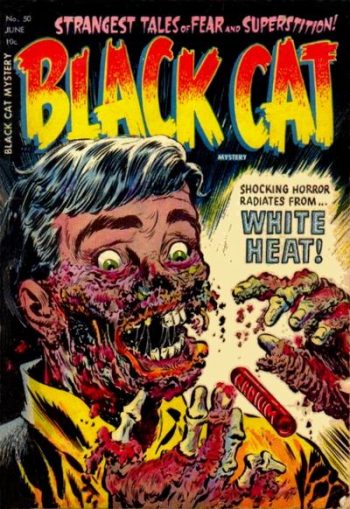
In John Benson’s “Silver Threads Among the Mold” from Alter Ego #89 (October 2009), Benson commented on the changes made to Harvey’s horror titles: “When Sid Jacobson took over as editor of the Harvey comics, starting with books dated early 1953, there was a definite change. Classic horror themes and rampant fantasy were moderated by a more contemporary attitude. Many of the stories evidenced a sense of humor. The stories had more realistic settings and tended to be more tightly plotted. All the artists improved, and the poorer ones disappeared.”
Eventually, the horror titles were canceled due to the Comics Code Authority, but Harvey had started publishing comic books based upon Paramount Pictures’ Famous Studios animated cartoons, many of which had found a way to present horror and supernatural elements in a way that was accessible to children. Soon Sid became editor of such characters as Casper the Friendly Ghost, Wendy the Good Little Witch, Baby Huey the Baby Giant, Hot Stuff the Little Devil, Richie Rich the Poor Little Rich Boy, Little Audrey, Little Dot, Little Lotta - pretty much every Harvey character except for Sad Sack and the occasional newspaper reprint or superhero title.
At the same time, Jacobson pursued his other love: songwriting. In the Companion, Jacobson’s longtime artist friend Ernie Colón commented, “He used to be a songwriter. He used to write hit songs right there in his office. With a guy named Lou Stallman, they put out a few hits together. He then gradually got out of the song business.”
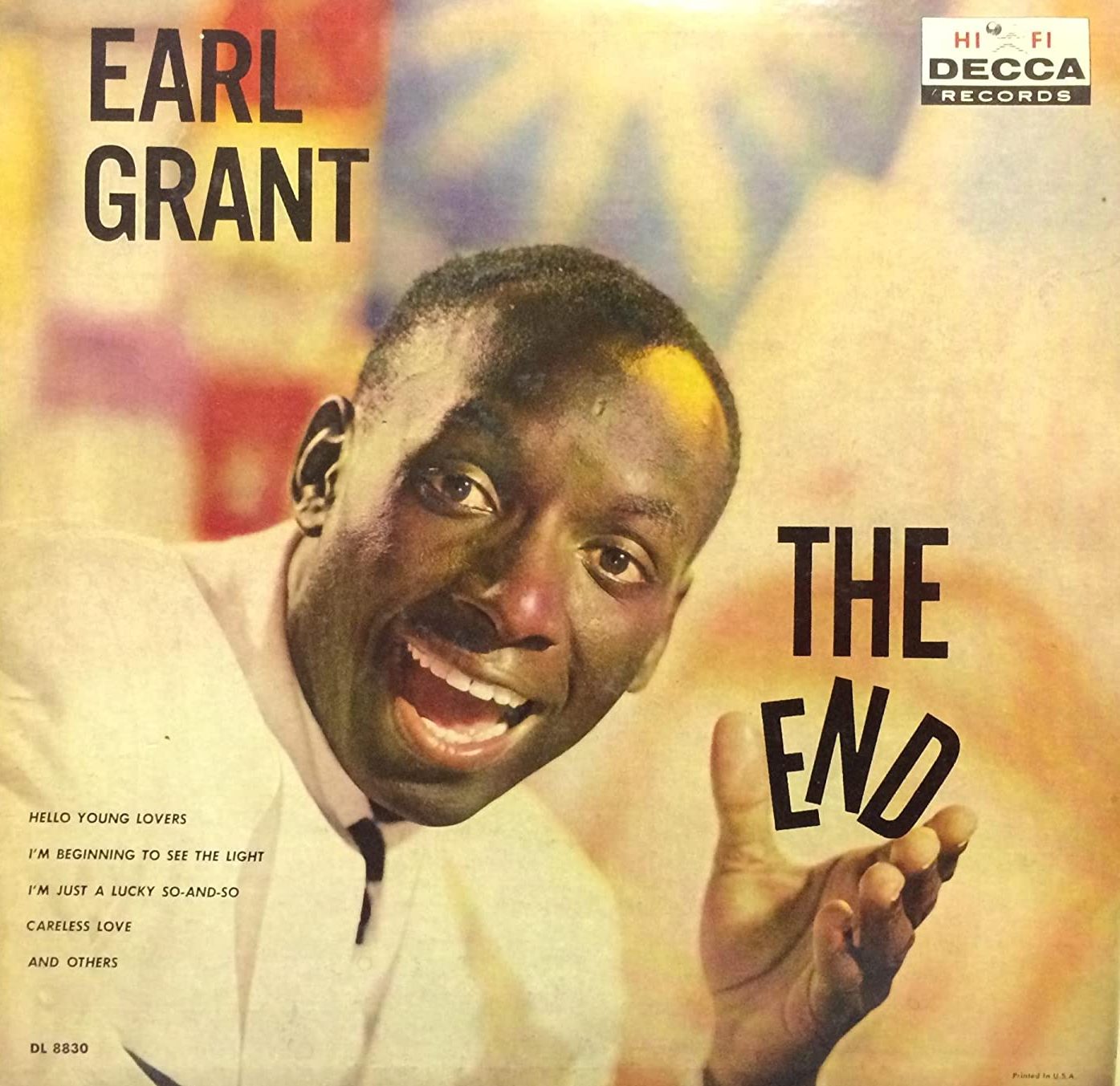
In Comic Book Artist #19, Jacobson said, “There was someone who used to work for Harvey Comics, who was starting a magazine. He offered me the job of coming in and working part-time. I decided I wanted to spend more time doing music. So, I told the Harveys I wanted to give up the job, and go into songwriting. They gave me a goodbye party, but what happened was, the guy who I was working part-time for broke down emotionally and I needed some kind of employment. Alfred Harvey’s wife, Vicki, called and said, ‘Nothing has gone out since you left! There’s not a book that’s gone out, aside from the books that don’t matter. Leon [Harvey, Alfred’s brother] was supposed to do it and he couldn’t do it. Is it possible you might want to come back?’
“So I figured, ‘Sure!’ But I knew I had to tell Alfred my situation.…
“Alfred said, ‘Are you willing to give up and come back?’
“And I said, ‘Well, I won’t give this up until he’s better. There are certain things I have to finish up for him. When I can walk away from it, it’ll be fine.… I still want to write songs.’
“He said, ‘Are you willing to work half a week, then give me whatever extra hours you can?’
“I said, ‘Yes.’ And that’s how it started. This was about 1960. I wrote about 300 songs: ‘The End of the Rainbow,’ ‘A Boy Without a Girl’ for Frankie Avalon, ‘Don’t Pity Me’ for Dion and the Belmonts, ‘Yogi’ by the Ivy Three, and ‘Warm’ by Johnny Mathis. It was a hit, too! I did a Kennedy take-off called ‘The Presidential Press Conference,’ ‘Wonderful You’ by [Jimmie] Rodgers. I even had a Sinatra record… Nancy Sinatra!”

The original Harvey company ceased publishing in 1982. At that time, while the owners were reorganizing, Jacobson got an offer to edit a new line of comic books for Marvel Comics. He readily agreed to the offer and took as many Harvey artists and writers with him as he could. When Harvey came back in 1986, they were now competing against this line, and by 1990 the Harvey family had thrown in the towel and sold off all of their characters except for Sad Sack and the Black Cat to entrepreneur Jeff Montgomery, who proceeded to hire Jacobson back as editor for a new line of Harvey Comics that lasted until 1994.
Animation historian Jerry Beck told me recently about that time: “I worked with Sid — at Harvey Entertainment in 1993-94. Didn't work under him — he was editing the comics for Jeff Montogomery; I worked in the Harvey offices separately as the producer of The Baby Huey Show. We became friends. I picked his brain a lot about the early days of Harvey. Had many lunches with Sid — mostly at the Grove in Los Angeles — many times in the years after I left the company.... We lost touch in recent years (maybe the last 10). He was a ball of energy. Had a great memory.... What a career! He wrote songs, he wrote the TV series Johnny Cypher in Dimension Zero, he was a loyal Harvey employee — he was the ‘Stan Lee’ of the Harvey universe. I can't stop thinking about the Sid I knew. A great guy. Rest in peace my friend.”
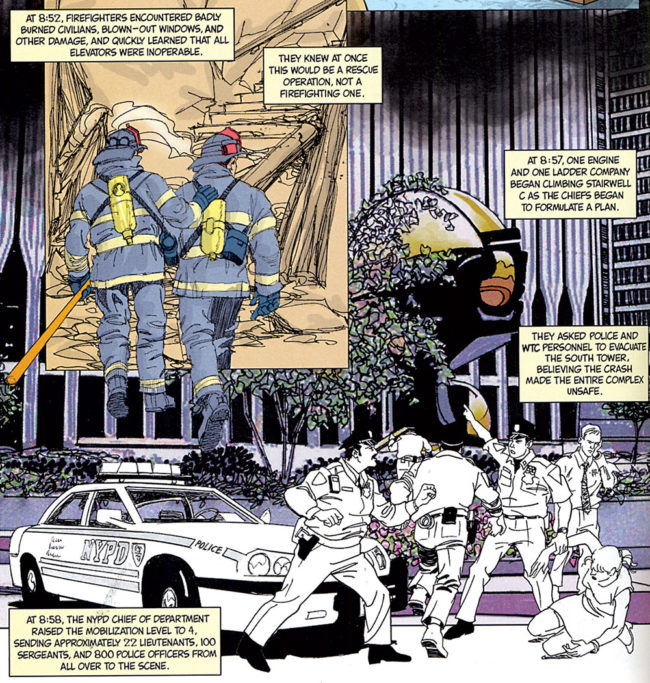
After Harvey stopped producing comic books, Jacobson went on to team up with Colón for a series of nonfiction graphic novels from 2006 through 2017, including The 9/11 Report: A Graphic Adaptation (Hill & Wang, 2006), After 9/11: America's War on Terror (2001- ) (Hill & Wang, 2008), Vlad the Impaler: The Man Who Was Dracula (Hudson Street press, 2009), Che: A Graphic Biography (Hill & Wang, 2009), Anne Frank: The Anne Frank House Authorized Graphic Biography (Hill & Wang, 2010) and The Torture Report: A Graphic Adaptation (Bold Type Books, 2017), after which he essentially retired. Jacobson received an Inkpot Award from Comic-Con International in 2003 for his career efforts.
In his obituary, Seth Jacobson recalled, “He wrote a woke comic satire, The Black Comic Book [Price Stern Sloan, 1970]. We were proud of this comic satire on famous comic strips with the heroes recast as African-Americans, who had to deal with the realities of racism! (Ernie Colón did the drawings!) He did another one about a Jewish superhero, Captain Israel and Boy Chick [Lancer Books, 1966] (Stan Kay did those drawings!). This one had a guy who looked a lot like Woody Allen as the bad guy! He wrote these books under a pseudonym because Harvey had some claim on his intellectual comic-related material so he called himself ‘Eric Reuben’ (Erica was Kathy's middle name and Reuben was mine).
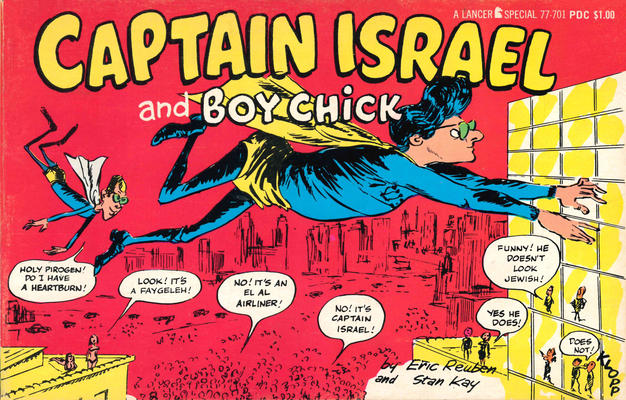
“Years later, he divorced our mom and met Maggi Rosen, whom he married and had more than 30 great years with.... She inspired him to write legit novels: historical fiction about Jewish families in America (Streets of Gold [Pocket Books, 1985] and Another Time [St. Martin's Press, 1989]). Somehow, he also found the time to start two sports magazines for kids (Superstar Sports and Team). Years later, he'd write a biography about Pete Reiser, an immortal Brooklyn Dodger.… Dad was productive into his late 80s, writing several unpublished novels… and still developing a comic musical about Frankenstein monsters (he was enamored with the Frankenstein story), and with Glenn Rabney, a graphic novel and potential TV series about the Sacred Band of Thebes (a Greek army made entirely of gay lovers)! Dad never cared if some might say it wasn't appropriate for him to tackle certain subjects.”
His daughter, Kathy, provided some additional memories: “Anyone who knows me knows that I adored my dad.... Until the end of his life, Dad maintained his charming self, and almost every nurse and caretaker he met up through his last days in hospice would comment about what a nice a man he was or must have been, even when he had so few words left to express himself. The hospice workers were taken aback by his good looks at the age of 92 — Dad had the whole package. I truly cherished every moment we shared together, as did others.… He believed in a world where we could all make a difference. I know he made the world a better place by being the positive, smart, and loving person he was.”
Jacobson is survived by his son, Seth Jacobson, his daughter, Kathy Battat, and three grandchildren.






